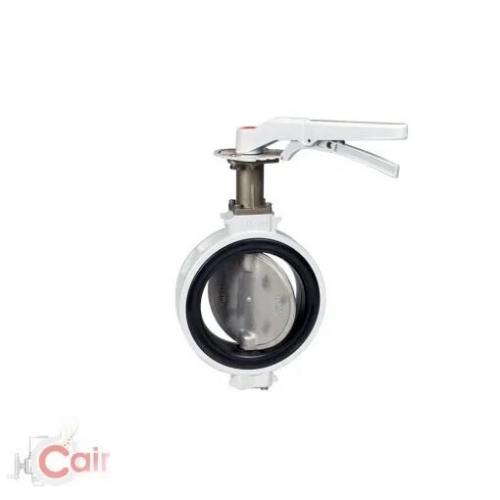Finding the Right Butterfly Valve Supplier: A Comprehensive Guide

If you are looking for a butterfly valve supplier, there are many factors to consider to ensure that you choose the right supplier and the right valve for your application. In this comprehensive guide, we will provide an overview of butterfly valves, their types, and their applications, as well as tips on how to choose the right supplier, evaluate the quality of butterfly valves, and ensure proper installation and maintenance.
Understanding Butterfly Valves and Their Uses
Butterfly valves are a popular choice for regulating flow in pipelines due to their simple design, low cost, and fast operation. They consist of a circular disc that rotates around a shaft to control the flow. Butterfly valves can be classified into two main types: wafers and lug. Wafer butterfly valves are installed between flanges, while lug butterfly valves have threaded inserts for easy installation. Butterfly valves can also be classified by their operation, such as manual, pneumatic, or electric.
Butterfly valves are used in a wide range of industries, including water treatment plants, chemical processing plants, HVAC systems, and oil and gas pipelines. They are particularly useful in applications where a rapid shut-off is required, such as in emergency situations. However, butterfly valves are not suitable for applications where precise flow control is needed, as they have a limited range of flow control.
Choosing the Right Butterfly Valve Supplier
Choosing the right butterfly valve supplier is crucial for any project. A reputable supplier will provide high-quality products, reliable technical support, timely delivery, and competitive pricing. Here are some factors to consider when choosing a butterfly valve supplier:
Experience: Look for a supplier with a proven track record in the industry. An experienced supplier is more likely to offer high-quality products and services, as well as reliable technical support.
Certifications: Check if the supplier has the necessary certifications, such as ISO 9001, to ensure that their product's processes meet industry standards and regulations.
Product Range: Look for a supplier with a wide range of butterfly valves, including different types, sizes, materials, and operation methods, to ensure that you can find the right valve for your application.
Customer Service: Choose a supplier that offers excellent customer service, such as fast response times, clear communication, and a helpful support team. This will ensure that you can get the assistance you need when you need it.
Evaluating the Quality of Butterfly Valves
The quality of butterfly valves can vary widely depending on the manufacturer and the materials used. Low-quality valves can result in leaks, corrosion, and premature failure, which can be costly and dangerous. Here are some key factors that affect the quality of butterfly valves:
Design: Look for valves with a robust design that can withstand the conditions of your application, such as high pressure, high temperature, or corrosive fluids. Valves with a weak design can fail prematurely and cause downtime and safety hazards.
Materials: Check if the valve is made of high-quality materials, such as stainless steel or high-grade plastics, that can resist corrosion, erosion, and wear. Low-quality materials can result in leaks, fractures, and contamination.
Manufacturing Process: Choose valves that are manufactured with strict quality control measures, such as regular testing, inspection, and traceability. Valves that are made with poor manufacturing processes can have defects and inconsistencies that affect their performance and lifespan.
Testing Procedures: Look for valves that are tested according to industry standards, such as API 598, to ensure that they can perform under the specified conditions. Valves that are not tested or tested improperly can have hidden defects and weaknesses.
Ensuring Proper Installation and Maintenance of Butterfly Valves
Proper installation and maintenance are crucial for the optimal performance and longevity of butterfly valves. Improper installation or neglected maintenance can result in leaks, corrosion, and valve failure. Here are some guidelines on how to install and maintain butterfly valves:
Installation: Follow the manufacturer's instructions carefully when installing the valve, and use the recommended tools and materials. Make sure that the valve is installed in the correct orientation and torque the bolts to the specified values. Use gaskets and seals that are compatible with the fluid and temperature of the application.
Maintenance: Perform regular maintenance tasks, such as lubrication, inspection, and cleaning, to ensure that the valve operates smoothly and efficiently. Follow the recommended maintenance schedule and replace any worn or damaged parts promptly. Monitor the valve for any signs of leaks, corrosion, or abnormal noise.
Common Issues: Watch out for common issues that can affect the performance of butterfly valves, such as seal wear, disc misalignment, and stem damage. Address these issues promptly to avoid downtime and safety hazards.
Training: Train your staff on how to install and maintain butterfly valves properly, and provide them with the necessary tools and resources. This will ensure that they can identify and address issues promptly, and reduce the risk of costly errors and accidents.
Conclusion
Choosing the right butterfly valve supplier and valve can be a challenging task, but by following the guidelines outlined in this comprehensive guide, you can make an informed decision that meets your project's needs. Remember to consider the types, applications, and quality of butterfly valves, as well as the experience, certifications, product range, and customer service of the supplier. By ensuring proper installation and maintenance of butterfly valves, you can also maximize their performance and lifespan, and minimize downtime and safety hazards.
Post Your Ad Here
Comments